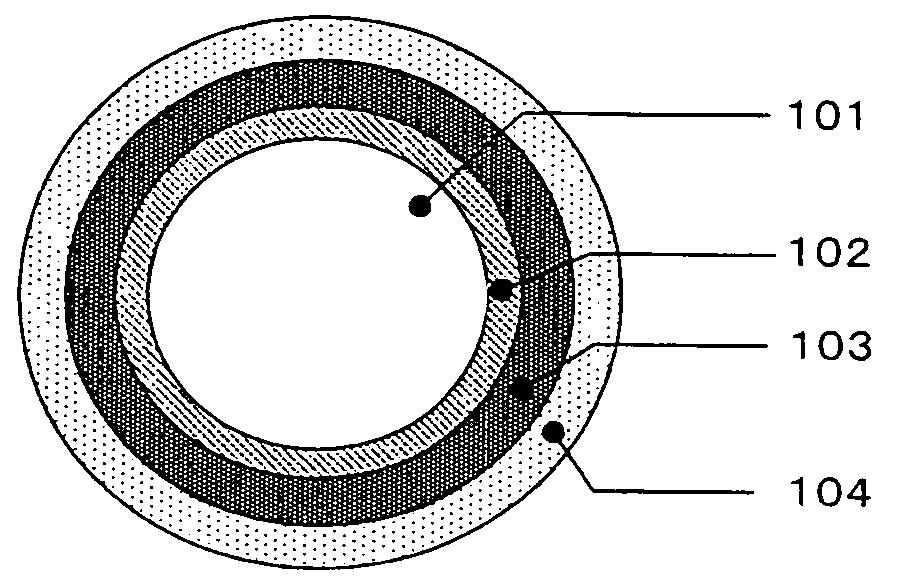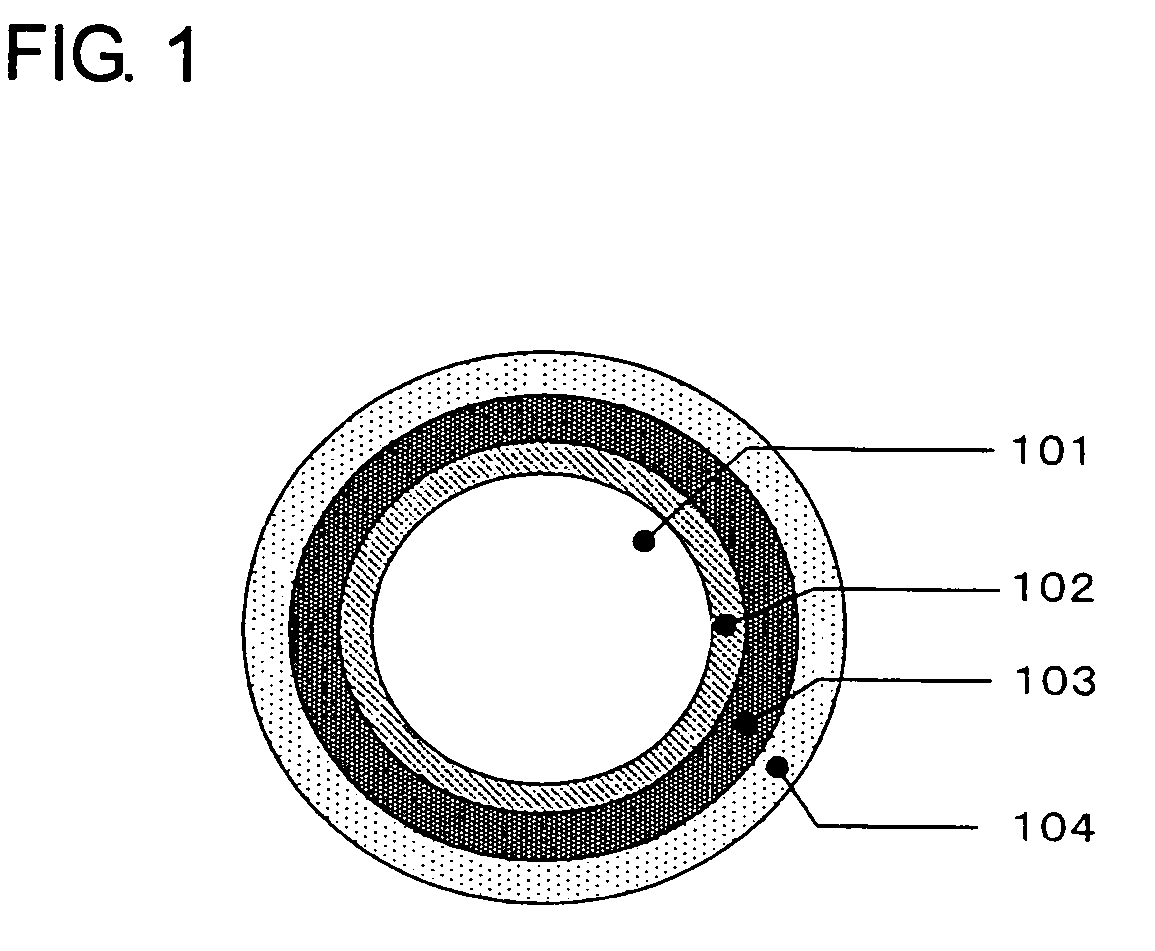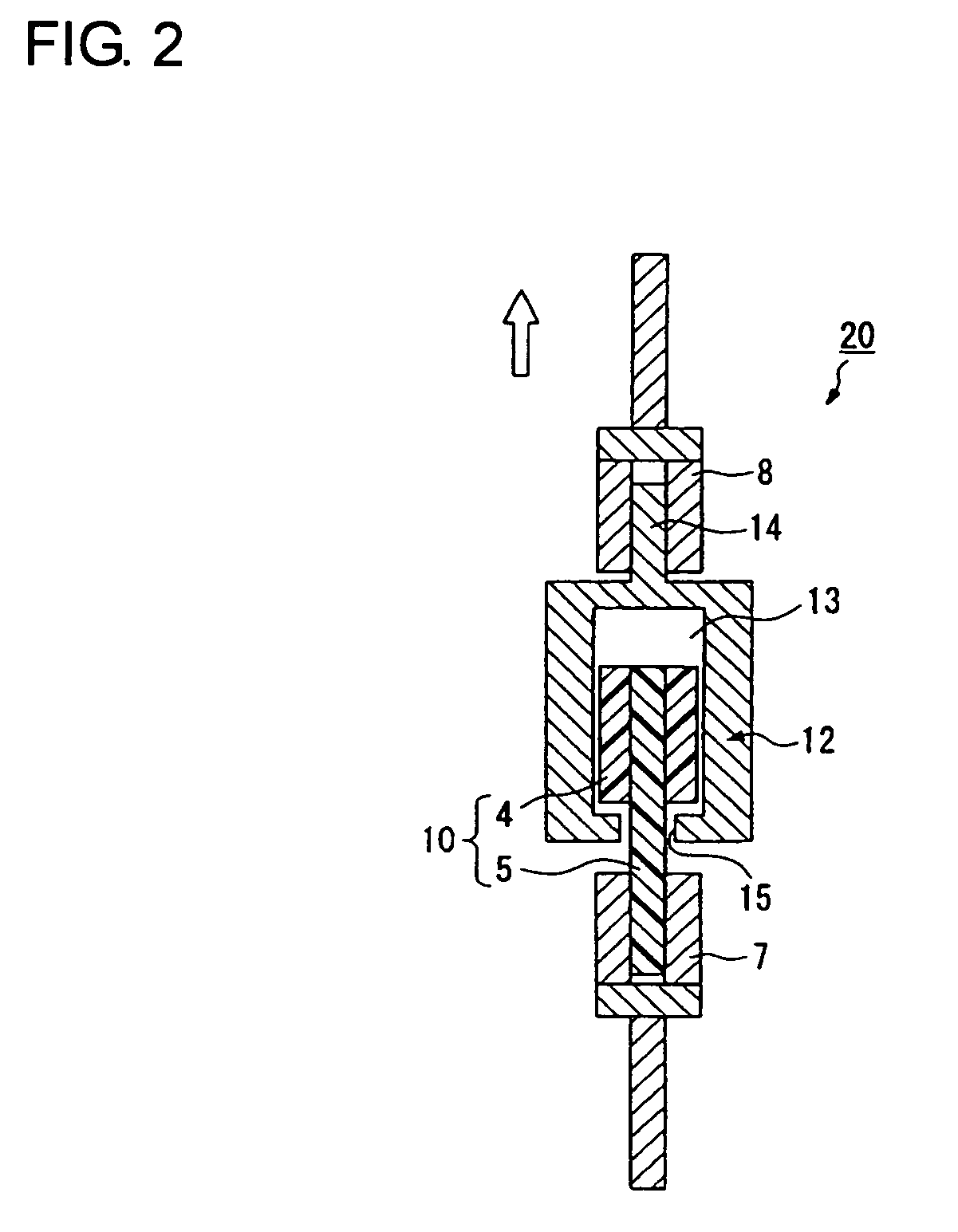Plastic optical fiber cable and method of signal transmission using the same
a technology of optical fiber cable and plastic fiber, applied in the direction of optical fiber with multi-layer core/cladding, optical waveguide light guide, instruments, etc., can solve the problems of increasing transmission loss, poor workability, and high cost of quartz optical fiber, etc., to achieve superior long-term heat resistance and increase transmission loss
- Summary
- Abstract
- Description
- Claims
- Application Information
AI Technical Summary
Benefits of technology
Problems solved by technology
Method used
Image
Examples
reference example 1
[0268]PMMA (refractive index of 1.492) was used for a core material, a copolymer (refractive index of 1.416 to 1.417) made of 3FM / 17FM / MMA / MAA (composition ratio of 51 / 31 / 17 / 1 (% by mass)) was used for a first cladding material, and a copolymer made of VdF / TFE / HFP (composition ratio of 43 / 48 / 9 (% by mass), refractive index of 1.375, heat of crystal fusion (ΔH) of 14 mJ / mg) was used for a second cladding material (“MAA” refers to a methacrylic acid). These polymers were molten and fed to a spinning head at 220° C. A concentric dual injection nozzle was used for bicomponent spinning, and the polymers were stretched to double in the fiber axis direction in a hot-air furnace at 140° C. to obtain a bare POF having a diameter of 1 mm in which each cladding layer has a thickness of 10 μm.
[0269]The transmission loss of the resultant bare POF was as good as 134 dB / km, and the transmission loss after a heat resistance test was also as good as 175 dB / km.
[0270]Around the resultant bare POF, a P...
example 1
[0274]A functional coating layer was formed around the POF primary cable having an outer diameter of 1.5 mm, which was prepared in Reference Example 1. Used as the feed material for the functional coating layer was a nylon 6 resin composition (bromine atom content of 6.8% by mass) that contains 83.5% by mass of nylon 6 resin (available from UBE INDUSTRIES, LTD., trade name: UBE nylon 1011 FB), 10% by mass of brominated polystyrene (available from ALBEMARLE CORPORATION, trade name: HP-3010, molecular weight of 50,000 given in terms of the equivalent polystyrene molecular weight as measured using GPC), 5% by mass of antimony pentoxide (available from NISSAN CHEMICAL INDUSTRIES, LTD., trade name: San-Epok), and 1.5% by mass of ultramarine blue. This resin composition was coated by using a crosshead cable coating machine having a crosshead die at 240° C. to obtain a POF secondary cable of an outer diameter of 2.3 mm, which has a functional coating layer (thickness of 400 μm). The conten...
example 2
[0277]A functional coating layer was formed around the POF primary cable having an outer diameter of 1.5 mm, which was prepared in Reference Example 1. Used as the feed material for the functional coating layer was a nylon 6 resin composition that contains 85% by mass of nylon 6 resin (available from UBE INDUSTRIES, LTD., trade name: UBE nylon 1011 FB), 15% by mass of melamine cyanurate (available from NISSAN CHEMICAL INDUSTRIES, LTD., trade name: MC-4000), and 1.5% by mass of ultramarine blue. This resin composition was coated by using a crosshead cable coating machine having a crosshead die at 240° C. to obtain a POF secondary cable of an outer diameter of 2.3 mm, which has a functional coating layer (thickness of 400 μm).
[0278]The resultant POF secondary cable was evaluated and the results are given in Table 2 below. The resultant POF secondary cable had an initial transmission loss of 135 dB / km and a transmission loss after a heat resistance test was 198 dB / km. The heat resistan...
PUM
 Login to View More
Login to View More Abstract
Description
Claims
Application Information
 Login to View More
Login to View More - R&D
- Intellectual Property
- Life Sciences
- Materials
- Tech Scout
- Unparalleled Data Quality
- Higher Quality Content
- 60% Fewer Hallucinations
Browse by: Latest US Patents, China's latest patents, Technical Efficacy Thesaurus, Application Domain, Technology Topic, Popular Technical Reports.
© 2025 PatSnap. All rights reserved.Legal|Privacy policy|Modern Slavery Act Transparency Statement|Sitemap|About US| Contact US: help@patsnap.com



